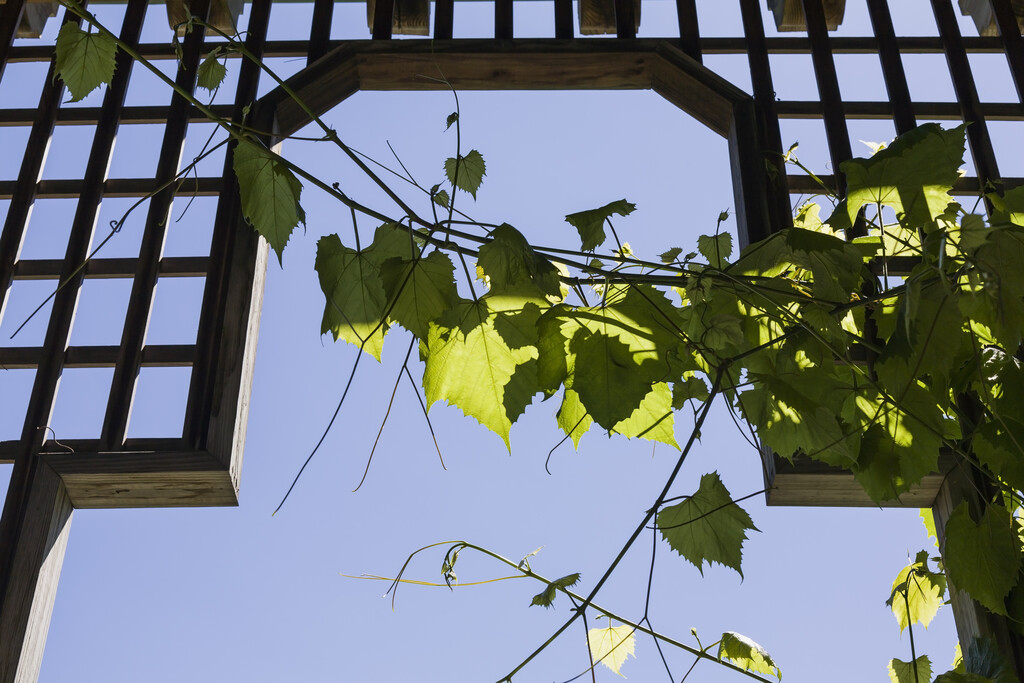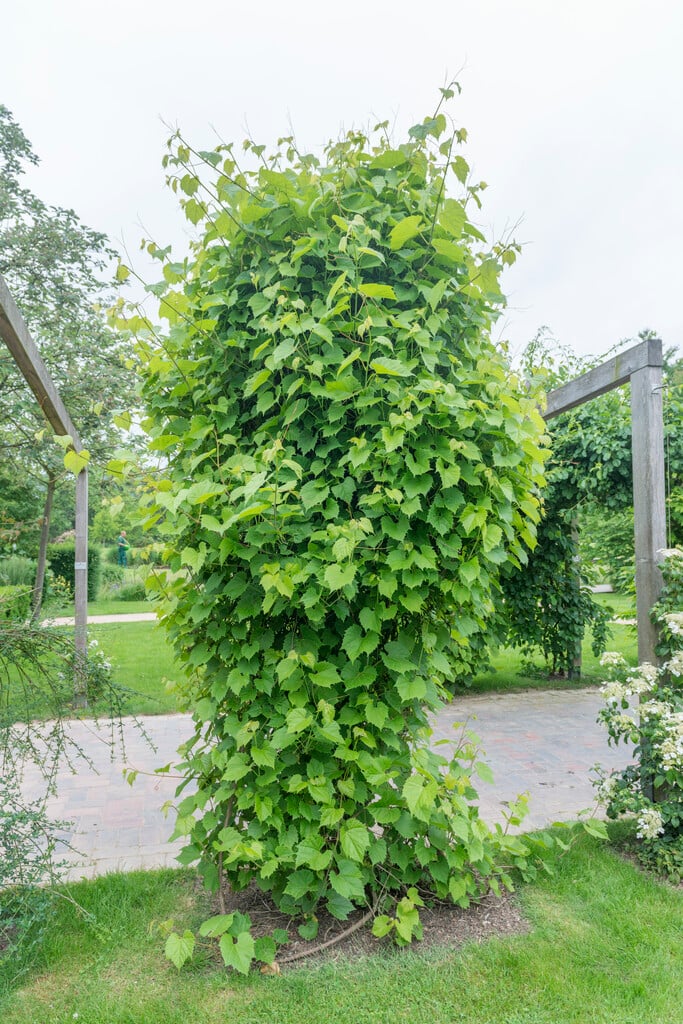Vitis riparia
riverbank grape
A vigorous woody climber with heart-shaped, sometimes lobed, coarsely toothed bright green leaves up to 20cm across. Small, scented yellow-green flowers are produced in spring, followed by clusters of blue-black fruits
Size
Ultimate height
8–12 metresTime to ultimate height
5–10 yearsUltimate spread
4–8 metresGrowing conditions
Moisture
Moist but well–drained, Well–drainedpH
Alkaline, NeutralColour & scent
| Stem | Flower | Foliage | Fruit | |
| Spring | Green Yellow | Green | ||
|---|---|---|---|---|
| Summer | Green | |||
| Autumn | Green Yellow | Blue Black | ||
| Winter |
Position
- Full sun
- Partial shade
Aspect
East–facing or South–facing or West–facing
Exposure
Sheltered Hardiness
H6Botanical details
- Family
- Vitaceae
- Native to GB / Ireland
- No
- Foliage
- Deciduous
- Habit
- Climbing
- Potentially harmful
- Pets (dogs): Harmful if eaten whether fruits are edible or ornamental - for further information and contact numbers regarding pets, see the HTA guide to potentially harmful plants
- Genus
Vitis are vigorous deciduous climbing shrubs with tendrils and attractively lobed leaves, insignificant green flowers followed by often edible fruits; some have excellent autumn foliage colour
- Name status
Correct
How to grow
Cultivation
Grow in full sun, in well-drained, humus-rich, preferably neutral to slightly alkaline soil. Keep watered in dry spells. The fruits of this species are popular with wildlife, though generally too sour for human consumption
Propagation
Propagate by layering in autumn or hardwood cuttings in late winter
Suggested planting locations and garden types
- Cottage and informal garden
- Wildlife gardens
- Climber and wall shrubs
- Wall side borders
Pruning
Pruning group 11 in midwinter, and in midsummer to restrict growth if necessary. See grape pruning
Pests
May be susceptible to grapevine blister mite, glasshouse red spider mite, brown scale, woolly vine scale and spotted wing drosophila (fruit fly)
Diseases
May be susceptible to powdery mildews, grey moulds, honey fungus and virus diseases; see grapevine diseases
Get involved
The Royal Horticultural Society is the UK’s leading gardening charity. We aim to enrich everyone’s life through plants, and make the UK a greener and more beautiful place.

